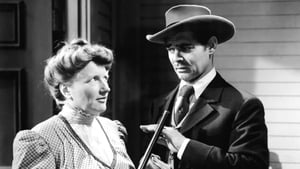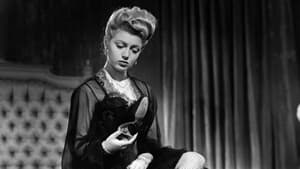Contact: info@alwanfilm.com
Video Sources 0 Views
- Watch trailer
- Honky Tonk 1941


Synopsis
Table of Contents
ToggleReview: Honky Tonk 1941 Colorized – A Classic Western Romance

Introduction
“Honky Tonk” (1941) is a classic film that encapsulates the spirit of the American West, blending romance, drama, and adventure in a vibrant and engaging story. In this article, we’ll explore the significance of the early colored version of “Honky Tonk,” examining its impact on the viewing experience and discussing its importance in the context of film history.
Check The Full Colorized Movies List
Check Our Colorized Movies Trailer Channel
Understanding Honky Tonk 1941 Colorized: Director, Cast, and Genre
Directed by the accomplished Jack Conway, “Honky Tonk” (1941) is a quintessential Western film that delves into themes of love, redemption, and the rugged charm of frontier life. The film stars Clark Gable as the charming and roguish gambler “Candy” Johnson, and Lana Turner as the beautiful and headstrong Elizabeth Cotton. Their electric chemistry on screen creates a compelling dynamic that drives the narrative forward, making “Honky Tonk” a standout in the Western genre.
The film’s genre seamlessly blends Western adventure with romantic drama, providing a rich tapestry of action-packed sequences, heartfelt moments, and moral dilemmas that keep audiences engaged from start to finish.
Exploring the World of Honky Tonk 1941 Colorized: Plot and Characters
“Honky Tonk” (1941) tells the story of “Candy” Johnson, a smooth-talking gambler who arrives in the small town of Yellow Creek with plans to make his fortune. His path crosses with Elizabeth Cotton, a preacher’s daughter, whose initial disdain for Candy’s lifestyle gradually turns into attraction as she gets to know the man beneath the gambler’s facade.
The film follows Candy’s journey from a self-serving conman to a man willing to fight for what he loves. Alongside Elizabeth, he faces challenges from corrupt politicians, rival gamblers, and the law, all while trying to carve out a new life for himself in the untamed West. Supporting characters, such as Judge Cotton (Elizabeth’s father), and Candy’s loyal sidekick, Sniper, add depth and richness to the story, creating a vibrant tapestry of life on the frontier.
The Art of Film Colorization
Film colorization is a process that adds color to black and white films, using digital techniques to enhance the visual appeal and bring classic movies to life for contemporary audiences. This process involves detailed frame-by-frame work, ensuring that the added colors are both historically accurate and visually pleasing. Over time, advancements in technology have refined the colorization process, allowing for more natural and immersive results.
Early Colored Films: A Brief History
The journey of film colorization began with early experiments in hand-tinting and stenciling, evolving into more sophisticated techniques such as Technicolor in the 1930s and 1940s. These early efforts paved the way for modern digital colorization, which has become a popular method for revitalizing classic films and introducing them to new generations. Films like “Honky Tonk” (1941) benefit from this technology, allowing viewers to experience the Western frontier in a whole new light.
Honky Tonk 1941 and Its Early Colored Version
The decision to release “Honky Tonk” (1941) in a colorized format was driven by the desire to make the film more accessible and appealing to modern audiences. The vibrant colors add a new dimension to the film, highlighting the rich landscapes, period costumes, and dramatic lighting that define its visual style. While some purists may prefer the original black and white version, the colorized release offers a fresh perspective that enhances the storytelling and emotional impact.
The Debate Over Film Colorization
The colorization of black and white films is a topic of ongoing debate among film enthusiasts and historians. Supporters argue that colorization breathes new life into classic movies, making them more relatable and visually engaging for contemporary audiences. Critics, however, contend that colorization can alter the original artistic intent and diminish the historical authenticity of the films. “Honky Tonk” (1941) stands at the center of this debate, showcasing both the potential benefits and drawbacks of the colorization process.
Examining Honky Tonk 1941 as an Early Colored Film
As an early colored film, “Honky Tonk” (1941) demonstrates how colorization can enhance the viewing experience by bringing out the vivid details of the Western setting and the characters’ costumes. The process adds depth to the visual narrative, making the story more immersive and engaging. However, it’s important to consider how the addition of color might affect the film’s original tone and atmosphere. For some viewers, the black and white version retains a certain charm and authenticity that colorization cannot replicate.
Influence and Legacy: Honky Tonk 1941 Colorized’s Impact on Cinema
“Honky Tonk” (1941) has left a lasting impact on the Western genre and on cinema as a whole. The film’s blend of romance and adventure set a standard for future Westerns, influencing countless films and filmmakers. The dynamic performances of Clark Gable and Lana Turner have become iconic, and the film’s exploration of themes such as redemption and moral ambiguity continues to resonate with audiences.
Director’s Cinematic Legacy: Beyond Honky Tonk 1941 Colorized
Jack Conway’s directorial career spans a wide range of genres and styles, with “Honky Tonk” (1941) standing out as one of his most memorable works. Conway’s ability to blend romance, drama, and action within the framework of a Western showcases his versatility and skill as a filmmaker. His legacy extends beyond “Honky Tonk,” with films like “A Tale of Two Cities” and “Boom Town” further cementing his reputation as a master storyteller.
Themes Explored in Honky Tonk 1941 Colorized
“Honky Tonk” (1941) delves into several timeless themes, including love, redemption, and the search for identity. The film explores the transformative power of love, as Candy Johnson evolves from a selfish gambler to a man of integrity willing to fight for what he believes in. Redemption is another central theme, as both Candy and Elizabeth grapple with their pasts and seek to build a better future. The film also examines the moral complexities of life in the West, where the lines between right and wrong are often blurred.
Reception and Controversy Surrounding Honky Tonk 1941 Colorized
Upon its release, “Honky Tonk” (1941) received positive reviews for its engaging story, strong performances, and stunning cinematography. However, the colorized version of the film has sparked controversy among purists who argue that the original black and white format should be preserved. Despite the debate, the colorized release has introduced the film to a new generation of viewers, ensuring its continued relevance in the world of cinema.
Where to Watch Honky Tonk 1941 Colorized Online
For those eager to experience the magic of “Honky Tonk” (1941), the film is available on several popular streaming platforms, including Netflix, Amazon Prime, and Hulu. Whether you choose to watch it in its original black and white format or the colorized version, “Honky Tonk” (1941) promises to deliver an unforgettable cinematic experience filled with romance, adventure, and timeless themes.
FAQs About Honky Tonk 1941 Colorized
Q: Is “Honky Tonk” (1941) based on a true story? A: No, “Honky Tonk” (1941) is a fictional story crafted by screenwriters Harry Ruskin and Marguerite Roberts. The film’s plot and characters are products of their imagination, although they are inspired by the spirit and challenges of life in the American West.
Q: Who are the main actors in “Honky Tonk” (1941)? A: “Honky Tonk” (1941) stars Clark Gable as the charming gambler “Candy” Johnson and Lana Turner as the strong-willed Elizabeth Cotton. Their on-screen chemistry and compelling performances drive the film’s narrative, making it a standout in the Western genre.
Q: What awards did “Honky Tonk” (1941) win? A: While “Honky Tonk” (1941) did not win any major awards, it received critical acclaim for its engaging story, strong performances, and stunning cinematography. The film remains a beloved classic of the Western genre.
Q: Why was “Honky Tonk” (1941) released in a colorized format? A: The decision to release “Honky Tonk” (1941) in color was made to appeal to modern audiences and breathe new life into the film for a new generation of viewers. By presenting the story in vibrant hues, the filmmakers aimed to enhance the visual experience and capture the attention of audiences accustomed to modern cinematic techniques.
Q: What are the main themes explored in “Honky Tonk” (1941)? A: “Honky Tonk” (1941) explores themes such as love, redemption, and the search for identity. The film examines the transformative power of love, the quest for redemption, and the moral complexities of life in the American West.
Q: Where can I watch “Honky Tonk” (1941) online? A: “Honky Tonk” (1941) is available for streaming on popular platforms like Netflix, Amazon Prime, and Hulu. Viewers can choose to watch the original black and white version or the colorized release, each offering a unique perspective on the timeless story.
Q: How does the colorized version of “Honky Tonk” (1941) compare to the original black and white version? A: The colorized version of “Honky Tonk” (1941) adds a new dimension to the film, highlighting the rich landscapes, period costumes, and dramatic lighting. While some purists may prefer the original black and white format for its historical authenticity and artistic integrity, the colorized version offers a fresh perspective and enhances the visual narrative for contemporary audiences.
Q: What impact did “Honky Tonk” (1941) have on the Western genre? A: “Honky Tonk” (1941) had a significant impact on the Western genre, setting a standard for future films with its blend of romance, adventure, and moral complexity. The dynamic performances of Clark Gable and Lana Turner, along with the film’s exploration of timeless themes, have influenced countless Westerns and continue to resonate with audiences today.
Q: Who directed “Honky Tonk” (1941)? A: “Honky Tonk” (1941) was directed by Jack Conway, a versatile filmmaker known for his work across various genres. Conway’s ability to blend romance, drama, and action within the Western framework showcases his skill and versatility as a director.
Q: What makes “Honky Tonk” (1941) a timeless classic? A: “Honky Tonk” (1941) is considered a timeless classic due to its engaging story, strong performances, and stunning cinematography. The film’s exploration of themes such as love, redemption, and moral complexity, combined with its dynamic characters and captivating narrative, ensure its enduring appeal and relevance in the world of cinema.
Conclusion
“Honky Tonk” (1941) remains a shining example of the power of cinema to transport audiences to another time and place, offering a captivating blend of romance, adventure, and moral complexity. Whether viewed in its original black and white format or the vibrant early colored version, the film continues to enchant and inspire generations of viewers with its timeless story and unforgettable performances.
As we reflect on the enduring legacy of “Honky Tonk” (1941), let us celebrate its status as a classic of the Western genre and its significant contributions to the world of film. By embracing both the original and colorized versions, we can appreciate the artistic vision of the filmmakers and the timeless themes that resonate across the decades.
For those who have yet to experience the magic of “Honky Tonk” (1941), now is the perfect time to explore this cinematic gem. Whether you’re a seasoned Western enthusiast or a newcomer to the genre, “Honky Tonk” (1941) promises to deliver an unforgettable journey into the heart of the American frontier, where love, redemption, and adventure await.













